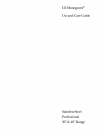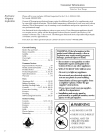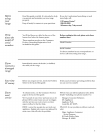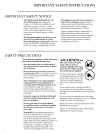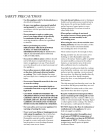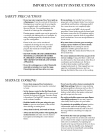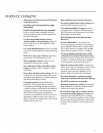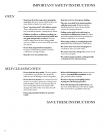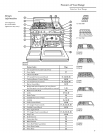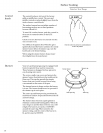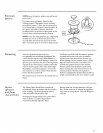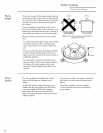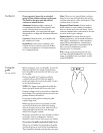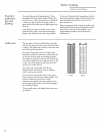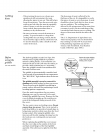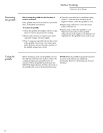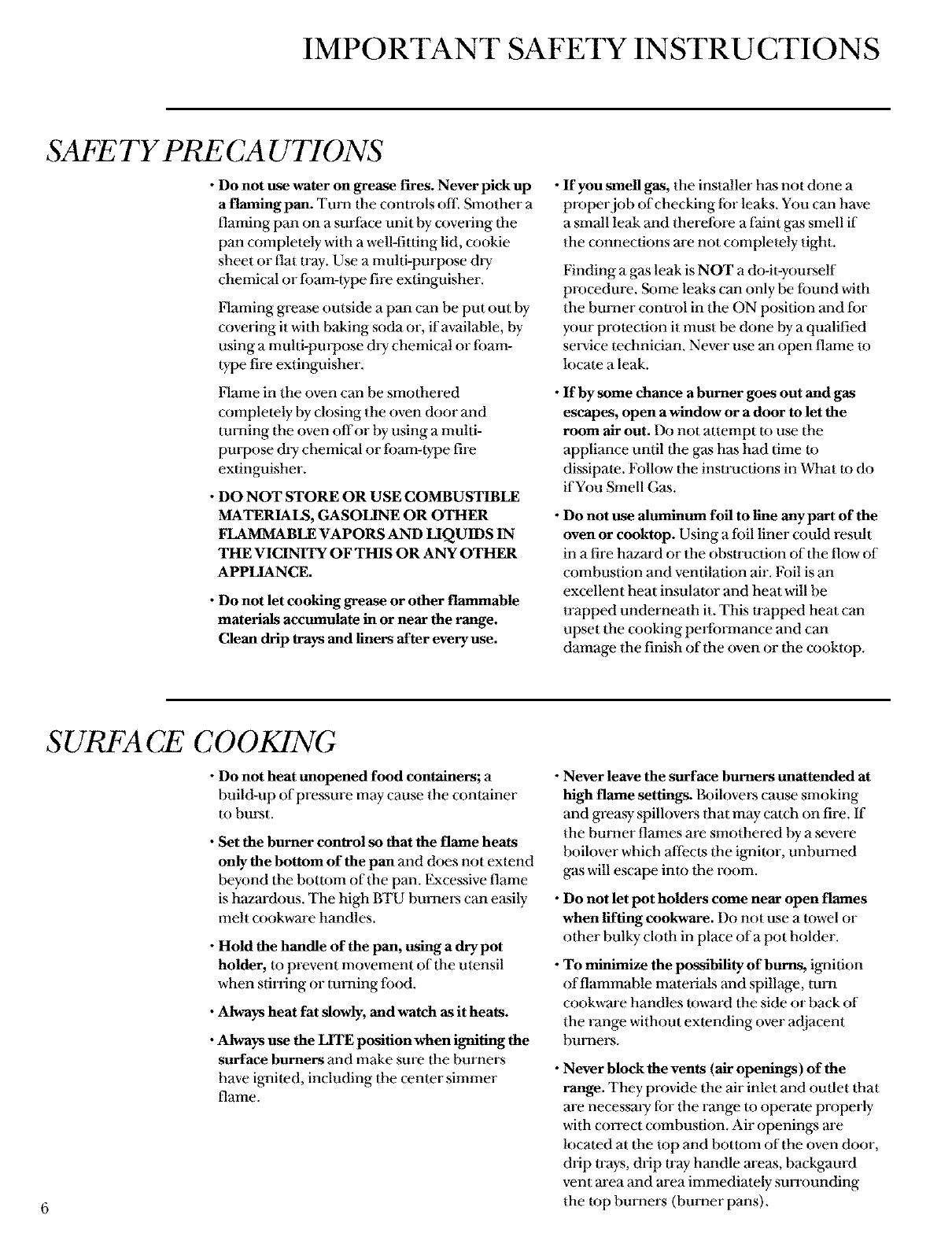
IMPORTANT SAFETY INSTRUCTIONS
SAFE TY PRE CA UTIONS
• Do not use water on grease fires. Never pick up
a flaming pan. Turn 1he controls off. Smother a
flaming pan on a surface unit by covering tim
pan completely with a well-fitting lid, cookie
sheet or flat u'ay. Use a multi-purpose dry
chemical or foam-type fire extinguisher.
Flaming grease outside a pan can be put out by
covering it with baking soda or, if available, by
using a multi-purpose &y chemical or foam-
type fire extinguisher,
Flame in the oven can be smothered
complemty by closing the oven door and
turning 1he oven offor hy using a multi-
purpose dry chemical or foam-type fire
extinguisher.
• DO NOT STORE OR USE COMBUSTIBLE
MATERIALS, GASOLINE OR OTHER
FLAMMABLE VAPORS AND LIQUIDS IN
THE VICINITY OF THIS OR ANY OTHER
APPLIANCE.
• Do not let cooking grease or other flammable
materials accumulate in or near the range.
Clean drip Ways and liners after every use.
• If you smell gas, the installer has not done a
proper job of checking for leaks. You can have
a small leak and therefore a faint gas smell if
the connections are not completely tight.
Finding a gas leak is NOT a do-il-youi,'self
procedure. &)me leaks can only be found wilh
the burner control in the ON position and for
your prolection it must be done by a qualified
scqwice technician. Never use an open flame to
locate a leak.
• If by some chance a burner goes out and gas
escapes, open a window or a door to let the
room air out. Do not attempt t{)use the
appliance until 1he gas has had time to
dissipale. Follow the insu_uctions in What to do
if You Smell Gas.
• Do not use aluminum foil to line any part of the
oven or cooktop. Using a foil liner could result
in a fire hazard or the obsu'uction of the flow of
combustion and ventilation air. Foil is an
excellent heat insulator and heat will be
trapped underneath it, This trapped heat can
upset the cooking performance and can
damage the finish of the oven or the cooktop,
SURFACE COOKING
• Do not heat unopened food containers; a
buil&up of pressure may- cause the container
to bm_t.
• Set the burner con_ol so that the flame heats
only the bottom of the pan and does not exlend
beyond the bot|om of flaepan, Excessive flame
is hazardous. The high BTU burneI,'s can easily
melt cookware handles.
• Hold the handle of the pan, using a dry pot
holder, to prevent movement of the mensil
when stirring or turning food.
• Always heat fat slowly, and watch as it heats.
•Always use the LITE position when igniting the
surface burners and make sure the burners
have ignited, including the center simmer
flame.
• Never leave the surface burners unattended at
high flame settings, l_)iloveI ,'scause smoking
and greasy- spillovers that may- catch on fire. If
the burner flames are smothered hy a severe
boilover which affects the ignitor, unburned
gas will escape into the room.
• Do not let pot holders come near open flames
when lifting cookware. Do not use a towel or
other bulky cloth in place of a pot holder.
• To minimize the possibility of bunts, ignition
of flammable materials and spillage, turn
cookware handles toward the side or back of
the Fange without extending over a{ljacent
burners.
• Never block the vents (air openings ) of the
range. They provide the air inlet and outlet that
are necessmy for the range 1{)operale properly
with correct combustion, Air openings are
located at the top and bouom of the oven door,
drip trays, drip u'ay handle areas, backgaurd
vent area and m'ea immediately surrounding
the top burners (burner pans),



